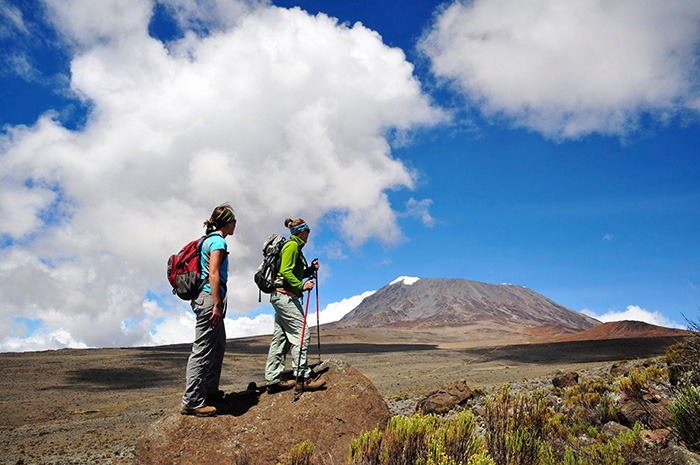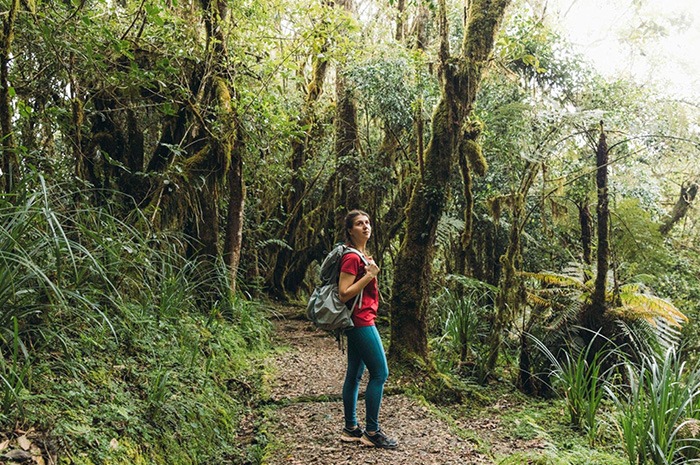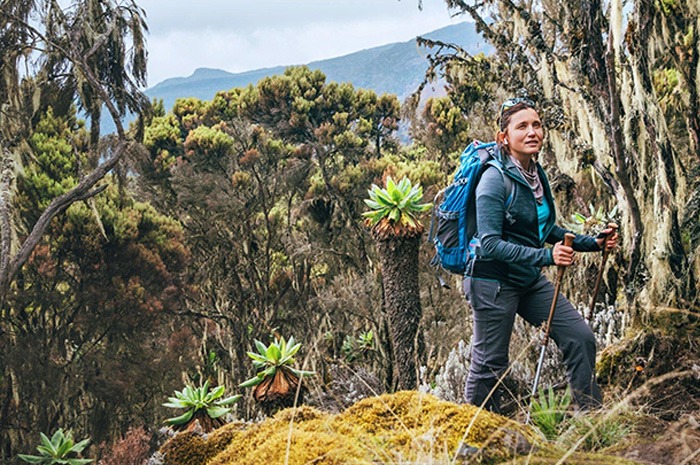6 DAYS 5 NIGHTS MARANGU ROUTE
HIGHLIGHTS
- One of the more interesting aspects of the Marangu Route is that it is the only route up Mount Kilimanjaro that doesn’t allow camping, so instead of sleeping in tents, trekkers stay in permanent huts instead.
- These dormitory-style shelters provide extra protection from the wind and rain, which makes this route a popular one for travelers climbing during the rainy season, which comes in April and May. There are 60 bunk beds each at Mandara and Kibo Huts, and 120 bunk beds at Horombo Hut
- While staying at those huts, trekkers will sleep in bunk beds equipped with a simple mattress and pillow. They’ll also be able to purchase an array of candy bars, bottled water, and soft drinks, which is why the Marangu route is often referred to as the “Coca-Cola Route.”
- The Marangu Route offers a slow, steady climb to each of the daily camps, which has given it the reputation for being an easy trek. Don’t underestimate this trail, however, as the approach to the final camp can be physically demanding with roughly 1000 meters of vertical gain on that day alone.
- Because it is one of the shortest treks to the summit – requiring just five days to reach Uhuru Peak– the Marangu Route is a popular one with trekkers who have a limited amount of time for their climb.
- The Marangu Route is also the only route that uses the same path going up and coming back down. That means that while the trail is a scenic one, trekkers will experience the same sites going up as they go back down. And because it has traffic going both directions, Marangu can also get overly crowded at times. Still, for a classic Kilimanjaro experience, it is tough to top this tried-and-true route to the Roof of Africa.
DAY 01: MANDARA HUTS
Once you have finished breakfast, it is time to leave Arusha and head towards the southeast entrance of Kilimanjaro National Park, better known as Marangu Gate. Upon arriving at Marangu Gate, you will be given the time to check in and register. This is where you begin your ascent of Kilimanjaro. The first leg of this route takes you through the woods and the rainforest where you will be able to take in the eucalyptus trees and various species of birds. If you are lucky, you may just spot a Colobus monkey or two – keep an eye out for black or white fur! Make sure you have the appropriate equipment and footwear because the low altitudes can produce wet, muddy soil.
Hiking: 5-7 hours
Overnight Altitude: 8,858
Habitat: Rainforest
DAY 02: MANDARA HUTS – HOROMBO HUTS
To start off day 2, you will explore the final stretch of woodland as the massive stretch of moorland begins to open up right in front of your eyes. On your walk, you can appreciate the jagged peaks of Mawenzi that ascend up towards the skies of Africa. It is common for people to experience the onset of altitude sickness at these heights. It is important to pay attention to how you feel and communicate with your guide at the first and slightest indication of illness. After reaching the Horombo Huts, you will have time to unpack and experience the view of Kibo before dinner.
Hiking: 5-7 hours
Overnight Altitude: 12,205
Habitat: Heath/Moorland
DAY 03 ACCLIMATIZATION DAY
You will spend an extra day at the Horombo Huts to allow your body to acclimate to the increasingly high altitude. You must stay at camp and relax if you are showing any signs of illness or are feeling especially tired. However, if you feel well-acclimated to the altitude, then you are free to walk up to Mawenzi Hut and admire the incredible view of Kibo and Mawenzi. Keep a steady pace and you walk the route and enjoy the magnificent landscape. Otherwise, you can take a journey to the remarkable Zebra Rocks. This requires a climb of 310 meters.
Hiking: 1-2 hours
Overnight Altitude: 14,400
Habitat: Heath/Moorland
DAY 04: HOROMBO HUTS – KIBO HUTS
On day 4, you will walk through varied and strikingly picturesque landscapes. To begin, you will continue across the heath as it slowly turns into the parched, desolate highlands between Mawenzi and Kibo. The scenery here is littered with huge and small volcanic rocks, acting as a testament to the volcanic activity of years past. The final stretch to the Kibo Huts is very steep and physically challenging.
Once you arrive at the Kibo Huts, it is time to organize your equipment and warm clothes for tomorrow’s journey to the peak. To prevent freezing, keep any water you plan on bringing in a thermos. Get to bed early, as the next day’s trek requires a full night’s sleep worth of energy. You are getting ready to take on Kilimanjaro’s ultimate challenge!
Hiking: 5-7 Hours
Overnight Altitude: 15,430
Habitat: Alpine Desert
DAY 05 KIBO HUTS – GILMAN’S POINT – UHURU PEAK – HOROMBO HUTS
As you awake around midnight, there is just enough time for a small meal before you begin your nightly hike. Many hikers consider the difficult terrain, scattered with loose rocks, to be the most difficult part of the climb. This is to make sure that you can make it to Uhuru, the highest point of Kibo, shortly after sunrise. There will be a quick stop at Gilman’s Point to experience the glorious view. Afterward, you will continue along the edge of the crater to Uhuru – this is the last part of the ascent and features a steady incline.
Depending on when you take your journey, you may face snow on the final stretch of the path to the Uhuru Peak – the highest point in Africa and the very top of Kilimanjaro. As you reach the peak, an altitude of 5,895, you can congratulate yourself as you experience the astounding view and get a picture in front of the Uhuru Peak Sign.
Now it is time to start back towards the Kibo Huts, you will find that this part goes by incredibly quickly. At the Kibo Huts, you will stop to relax and enjoy a much-needed lunch, before moving along to the Horombo Huts, where you will enjoy a well-deserved full night’s rest.
Hiking: 4-5 Hours
Overnight Altitude: ~12,205
DAY 06: HOROMBO HUTS – MARANGU GATE – ARUSHA
As we make the final descent through the rainforest to the Marangu Gate, we will have lunch and say farewell to our mountain crew. Afterward, we will leave Mount Kilimanjaro National Park and drive back to Arusha for a much-needed shower and a commemorative dinner!
Hiking: 5-7 Hours
Overnight Altitude: `1,843
Habitat: Alpine Desert
|
1PAX |
2PAX |
3PAX |
4PAX |
5PAX |
6 PAX |
|
USD$ 2,500 |
USD$ 2,250 |
USD$2,100 |
USD$ 1,950 |
USD$1,1800 |
USD$1,750 |







